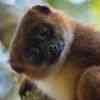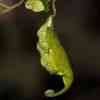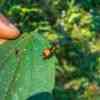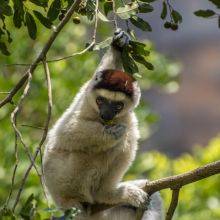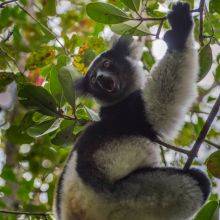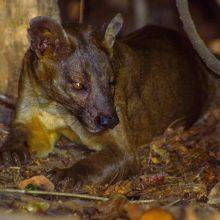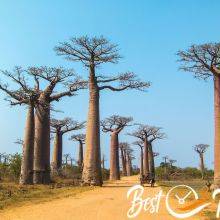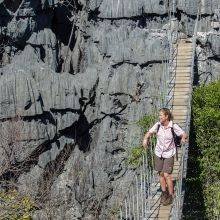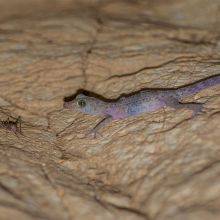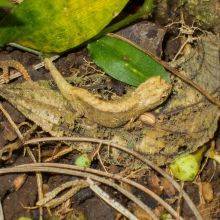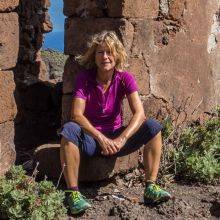When Is the Best Time
Ranomafana (the Malagasy words for “hot water”) is without a doubt the most spectacular places in Madagascar. Its name is derived from the hot springs which pour out warm water into the valley. Because it is easily accessible and provides immense biodiversity, it became one of the most visited areas on Madagascar. The rainforest stretches over a mountainous terrain of over 410 km² and is Madagaskars 3rd largest park. Besides 12 different lemur species, it is home of the golden bamboo lemur. A species discovered in 1986 and the reason this park exists. The tarred roads crossing the park made it accessible all year. Only during the rainy season, the travel may take longer than usual.
Madagascar's overall climate is subtropical, with a hot and rainy season between November until end of March, and a cooler and drier season from May to October. Each of the five regions of the island is subject to its climate and precipitation varies widely between the regions. During the wet season and times of high rainfall, travel can become difficult, if not impossible. Based on the different geographical areas huge temperature variations can occur.
The Ranomafana Park is located on a high elevation between 800m and 1200m, and the densely forested hills are covered by primary and secondary forest. The climate is warm and humid often with relative moisture of 90-97%. The average temperature seldom increases over 25°C and drops not under 14°C. During the night it can cool down significantly. The temperature highs and lows may vary depending on the occurrence of a tropical cyclone.
Best month to visit are from May to November although the dry season usually extends from April to December. Precipitation during the wet season is highest in January with 430 mm and the driest month is August. Because annual rainfall is in the range from ~1,600 to 4,017mm rain can occur every day and it's highly recommended to come with waterproof shoes, rain jacket, and umbrella. More weather details: Ranomafana Weather Statistics
It is essential to spend enough time in the park and hike to the primary forest at higher elevations. If you only plan to hike the short tracks, it can become very crowded during the peak season (July to September).
Best Months to Visit
Location and Tips

The Park was declared as UNESCO world heritage site in 2007 with its huge endangered endemic biodiversity. Before that time, the forest became exploited and today only the remote parts of the forest can be considered as primary forest. You’ll find rare species and seriously threatened there. It is home of more than 100 bird species and a place to go for reptile lovers. With more than 90 different amphibians and approx. 60 reptiles including rare chameleons can be a once in a lifetime experience.
We spend two days in this National Park. Absolutely outstanding, we saw many chameleons and geckos, the Golden Bamboo Lemur, the reason for creating that National Park, eastern ring-tailed mongoose, greater bamboo lemur, brown lemur with baby, eastern sportive lemur, Milne Edward's sifaka, frogs, birds. The night walk outside along the forest was tremendous. We even discovered a brown mouse lemur and many chameleons. We always went with our guide to the village Ranomafana in the late afternoon. First, buy some handicrafts and spices to support the villagers and second eat some snacks like the crayfish caught from the river. It was definitely the best place in our three weeks' vacation.
Different trails allow to explore the beauty of the park and provide a choice for every fitness level. As more difficult and longer the trails are fewer people and crowds can be expected. To explore the first, you must go with a guide. It had happened that tourist got lost but moreover, you will miss most of the animals without an experienced guide. In addition, either an animal spotter will join, or the guide will communicate with the spotters in the forest. The group limit per guide is 4 person and fees for the official guides are posted. The guides expect that you are mainly interested in mammals and birds. If you are more interested to observe plants or insects, you need to let them know upfront. Don’t miss to request a night walk to see the nocturnal species like the Fossa fossana and the Mouse lemur, the smallest lemur in the world.
The following list of trials may not be exhaustive but provides a guidance what to expect:
Varibolomena circuit
Level: Easy
Time: ~ 4 hours (day or night)
What to expect: spotting bamboo lemurs in the secondary forest, beautiful waterfall. At night you can discover reptiles and frogs. On the way picnic spots, and bathing is possible at the Namorona river. An early morning start is best.
Sahamalaotra circuit
Level: Easy to Medium
Distance: up to 10 km
What to expect: spotting lemurs and birds. Some primary forest and plants (orchids, palm trees). Exploring a historic site and observe birds and frogs (Mantella baroni)
Vohiparara circuit
Level: Medium
Time: up to 2 days
Distance up to 20km
What to expect: spotting lemurs, birds and other animals and visiting a sacred lake. Several orchids, and water and marsh plants, terrestrial ferns. Remarkably interesting for birders.
Varijatsy circuit
Level: Difficult, rough trail
Time: from ½ to 2 days
Distance: up to 15km
What to expect: Experience the primary forest and spotting lemurs and birds. Enjoy a natural pool and observer a beautiful waterfall. Observation of rare frog observation like Mantella baroni, plants, landscapes, historic, and cultural sites. The extended version up to two days requires camping.
Soarano circuit
Level: adventures, really tough and rough trail through a wet forest
Time: 2 or 3 days
Distance: >20 km
What to expect: Experience the primary forest to discover interesting plants. Spotting lemurs and birds and other animals. You may visit a village in the middle of the forest.





